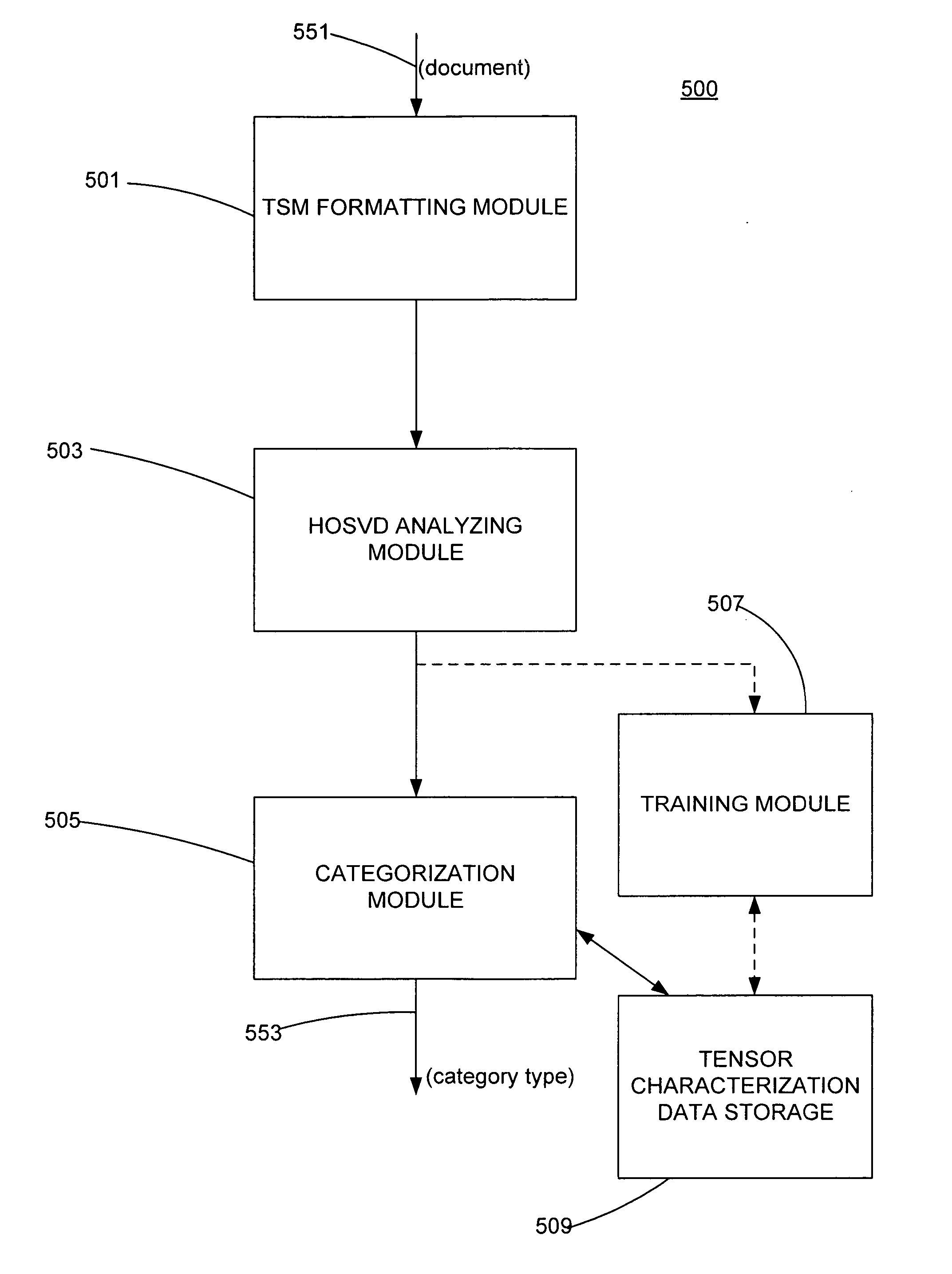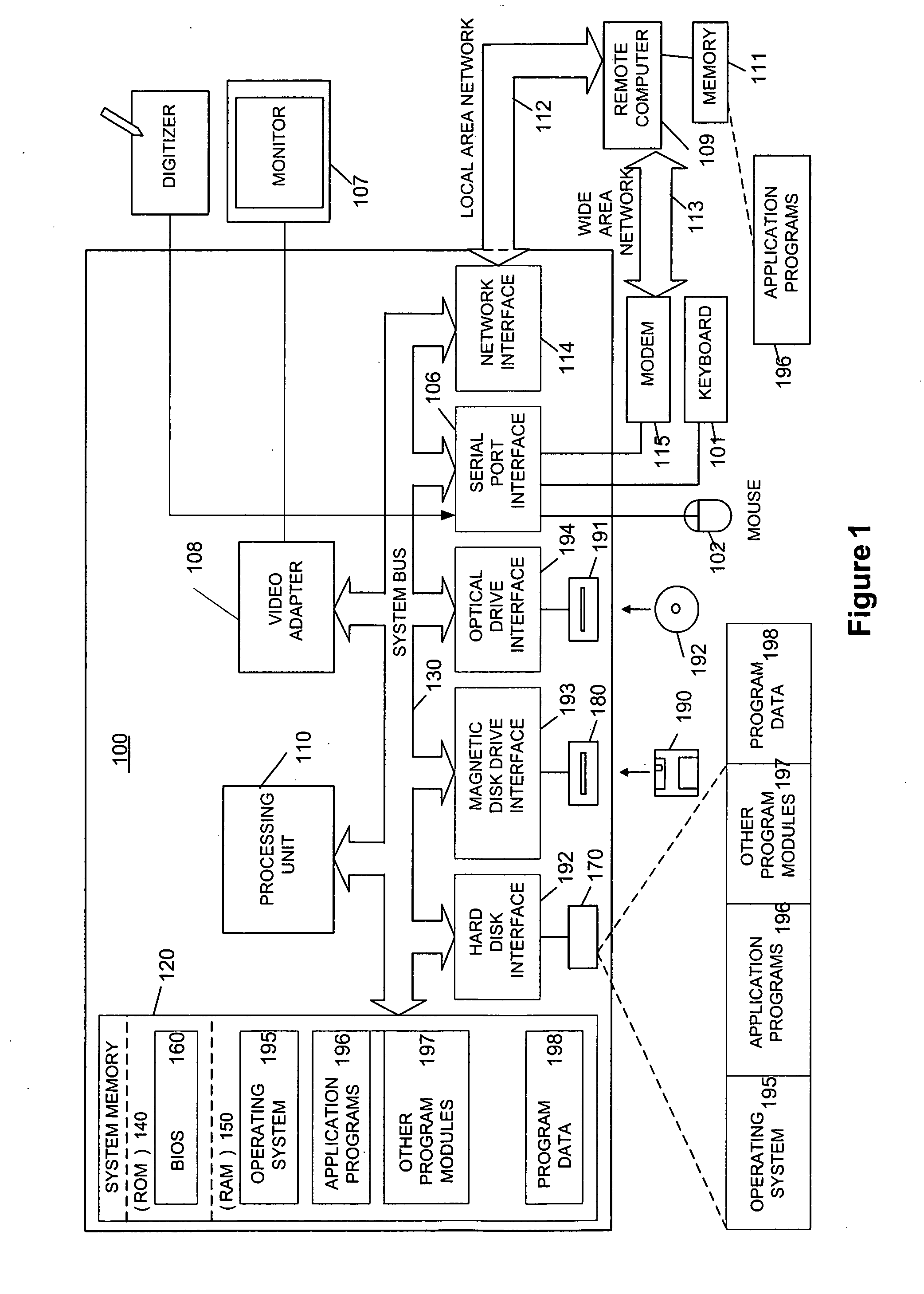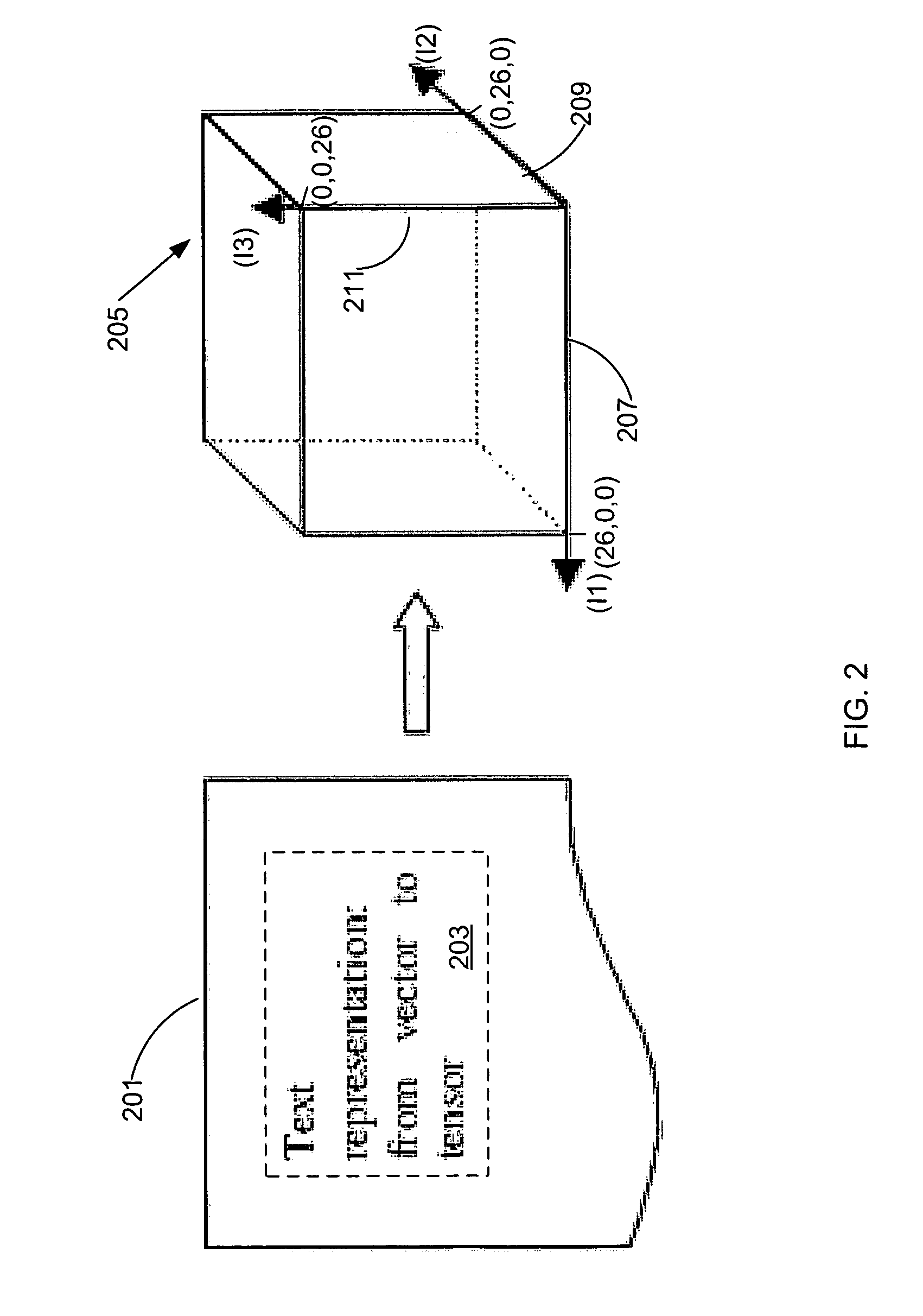Document characterization using a tensor space model
- Summary
- Abstract
- Description
- Claims
- Application Information
AI Technical Summary
Benefits of technology
Problems solved by technology
Method used
Image
Examples
Embodiment Construction
[0015] Aspects of the present invention relate to distinguishing the script type of at least one portion of a writing input.
[0016] The following is separated by subheadings for the benefit of the reader. The subheadings include: Terms, General-Purpose Computer, Tensor Space Model, HOSVD Algorithm, an Illustrative Example, and Experimental Results.
Terms
[0017] Order of Tensor: The order of tensor is N if εRI1×I2× . . . ×IN, where R is a tensor space.
[0018] Dimension of Tensor: The dimension of tensor is D=I1+I2+ . . . +IN if εRI1×I2× . . . ×IN, where R is a tensor space.
[0019] Higher-order Tensor: A tensor that has an order of at least three.
[0020] Core Tensor: A dimensionally-reduced tensor that is determined from HOSVD of tensor , where =×1U1T×2U2T× . . . NUNT.
General Purpose Computer
[0021]FIG. 1 is a functional block diagram of an example of a conventional general-purpose digital computing environment that can be used to process a writing input from a Pen (e.g., stylus...
PUM
 Login to View More
Login to View More Abstract
Description
Claims
Application Information
 Login to View More
Login to View More - R&D
- Intellectual Property
- Life Sciences
- Materials
- Tech Scout
- Unparalleled Data Quality
- Higher Quality Content
- 60% Fewer Hallucinations
Browse by: Latest US Patents, China's latest patents, Technical Efficacy Thesaurus, Application Domain, Technology Topic, Popular Technical Reports.
© 2025 PatSnap. All rights reserved.Legal|Privacy policy|Modern Slavery Act Transparency Statement|Sitemap|About US| Contact US: help@patsnap.com



